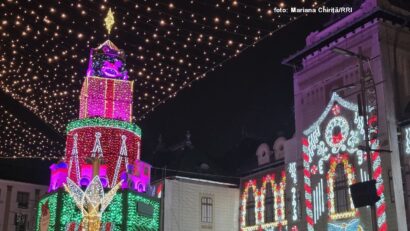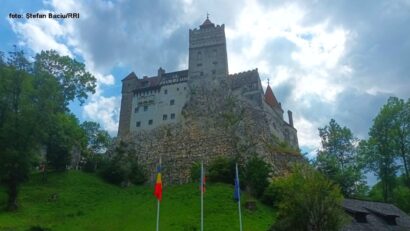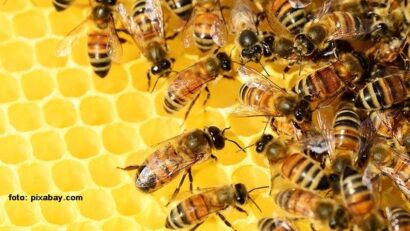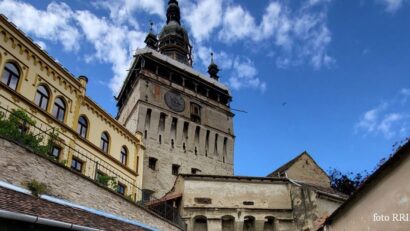Eco-tourism in Romania
A look at the latest in Romania's Eco-tourism
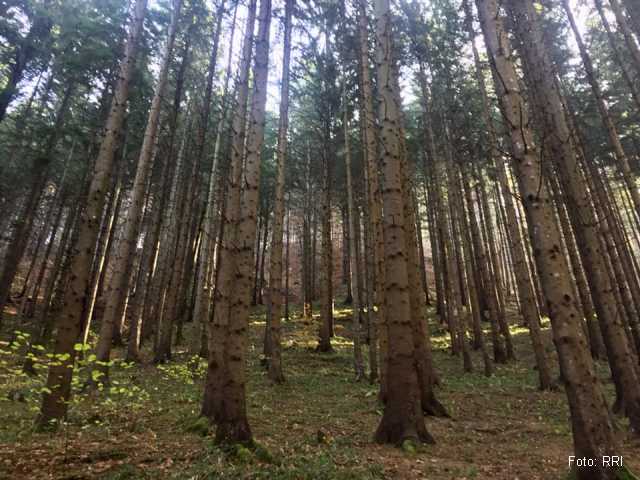
Daniel Onea, 22.06.2023, 14:00
Romania is known, among other things, because of its
vast and virgin forests, because of the areas where tradition is still unspoiled
and where we find craftsmen who still work handicraft objects using techniques
and following patterns that have been handed down to them from one generation
to the next. In all this landscape there are associations that have been
striving to preserve the natural values and provide education focusing on responsible
tourism. Today we will find out what exactly eco-tourism entails. Our guide is
advocacy expert and Greener Association coordinator, Loredana Pana.
Loredana Pana:
It entails the activities we can do when we are
on holiday, yet we do such activities with a significantly less strong impact
on the environment we visit, Tourism, as a rule, can do a lot of damage to the
visited places. The great inflow of tourists, the flight, everything we consume
while on holiday, all that takes its toll on the tourist destinations. When we
intend to do eco-tourism or slow tourism, as it is known, we visit certain
areas, bearing in mind the impact we can have on nature. For instance, we do not
use motorized vehicles when on holiday or we spend as much time as we can in
the same area and eat the local produce and not those brought from afar, as the
latter have a strong carbon imprint. Practically, we need to think as much as
we can about the impact we have in a given community and what we live behind
us. The eco-routes are ecotourism itineraries we can take by foot, by bicycle,
by water, using a kayak, on horseback, so it’s about non-motorized means of
transport.
Luckily, in Romania, quite a few of the areas around the
country are not very developed, so they somehow are in a natural condition
which is closer to eco-tourism. Notwithstanding, according to Greener
Association’s Loredana Pana, ecotourism should work according to a sound legal
framework.
Loredana Pana:
Unfortunately, I don’t think there is a
tendency or an encouraging trend at legislative and national level to support
such eco-tourism destinations and I think we have the opportunity to do it
since we’re still at the beginning, yet such destinations should be promoted
more often.
Ecotourism Destination is a concept that has
been developed since 2012 by the Central Public Tourism Authority, in
partnership with nationwide representative institutions and organizations. At
that time, Romania was Europe’s first country to have launched such a
recognition system of the ecotourism destinations. As we speak, there are seven
officially recognized eco-tourism destinations. However, advocacy expert and Greener
Association coordinator, Loredana Pana, invites us to explore an area which, even
though it has not been officially recognized as such, can be the perfect
destination for those who want to do green tourism.
Loredana Pana :
I will
recommend, right now, the areas along the river Danube. We have many projects
involving river Danube and the Danube Delta. The Danube Delta is an
extraordinarily beautiful area it is a UNESCO world heritage site, it is unique
around the world, thanks to the landscape the Danube forms as it flows into the
Black Sea. We still have villages that are not touristic. I should like to
recommend to your listeners to take a couple of days off and have boat rides,
slowly, with as small boats as possible, and spend as much time as they can in
those villages of the Danube Delta, being in direct contact with the local
community. I don’t recommend that we go to a resort, which is somehow separated
from the entire local community. The Danube Delta is a unique example from the
viewpoint of multiculturality. There are over 12 ethnic groups living in the
Danube Delta and Dobrogea and they are a good example of good practice as they
have preserved their traditions and lived together for such a long time.
The Greener Association has this week launched the
Danube Eco-route.
Loredana Pana :
This is actually an idea we are going to
continue to work on. It’s a 44-kilometre-long route on land and water
around the city of Giurgiu. The route includes the city of Giurgiu and other
four communes, Slobozia, Oinacu, Prundu and Gostinu. These 44 kilometres can be
covered on bicycle, on foot or on horseback. It is important that we should not
go there by cars or other motorized vehicles but enjoy the tranquility of
nature and the fresh air. We have proposed this eco-route because we need green
areas to use for entertainment and our psychological welfare, so to say. It is
at one hour distance from Bucharest, a marvelous area the Danube creates in
this region. In the south, for instance, there are no entertainment facilities
on the Danube, like we have in the Delta, or where the Danube enters Romania,
for instance.
For those who want more centralized information
concerning the access to this route, the Greener Association has a project in
place.
Loredana Pana:
By the end of the year we want to
create a virtual map with this Danube eco-route as it is important for people
to have all the information they need, how to get access, how good the road is,
if they can bring their children along etc. And we want to make that map
public. I invite you to follow us at maimultverde.ro and on our social
networks. We are going to post all the information than we can glean by the end
of the year.
Loredana Pană, expert advocacy and project coordinator
with the Greener Association, has also met an increasing number of foreign
tourists who have appreciated the lack of human intervention in these wild
areas.
Loredana Pana:
Trekking routes through the mountain
wilderness have been much appreciated. Transylvania with all that it has to
offer is also very appreciated. Bucharest has become a travel destination for
city breaks. And from the viewpoint of the environment and ecology, we have
been running a new programme in Bucharest since last year. It is called
‘Outdoor’ and through it we are trying to promote the city’s less-known green
areas to its citizens. There are also wild green areas, where people don’t have
access at present, such as the lakes on the Colentina river. Back in the 60s,
there were lots and lots of swimming pools there in what was dubbed as ‘the
seaside of Bucharest’. Not anymore nowadays, you know. Bucharest can also
become an eco-tourist attraction for Europe although we are quite far from this
objective at the moment and there is no strategy to bring us to that
direction
However, there is an increasing tendency to come back
to nature in the Romanian tourism and from this point of view the offer is very
diversified. (EN & bill)

